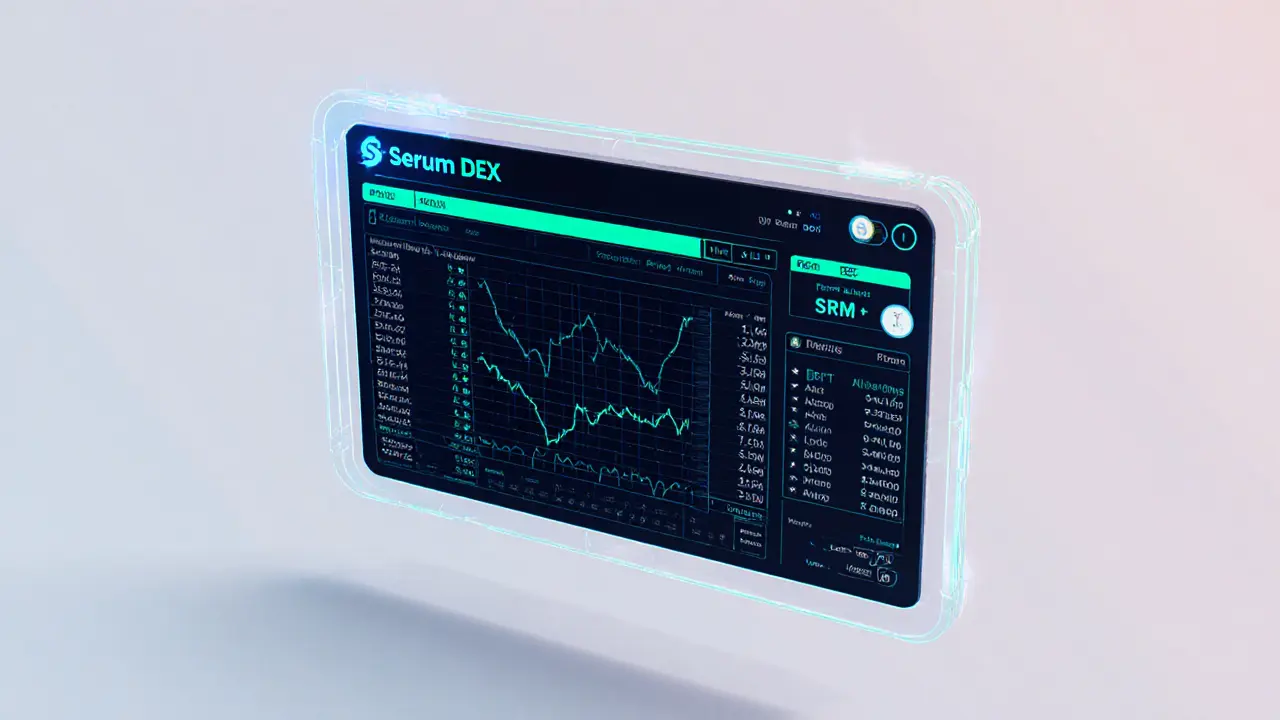SRM Token – Your Guide to Serum, Solana, and DeFi
When working with SRM token, the native utility token of the Serum decentralized exchange built on the Solana blockchain. Also known as Serum Token, it powers order‑book trading, provides fee discounts, and fuels liquidity incentives across the ecosystem.
If you're hunting for reliable info on SRM token, you’ve landed in the right spot. The token isn’t just another meme coin; it’s a core component of a high‑speed DEX that mimics traditional order‑book markets while staying fully on‑chain. Understanding SRM means understanding how Serum DEX operates, why Solana’s architecture matters, and how DeFi projects tap into its capabilities for better capital efficiency.
Key Players Around SRM
Serum DEX, the platform that houses SRM, is a decentralized exchange, offering on‑chain order books, cross‑chain swaps, and low‑latency trade execution. Its design mirrors centralized exchanges, giving traders the familiar limit‑order experience without giving up custody. The exchange’s speed and low fees stem from the Solana blockchain, a high‑throughput layer‑1 network that processes thousands of transactions per second. Solana’s proof‑of‑history consensus and parallel processing enable Serum to settle trades in milliseconds, a crucial advantage for market makers and arbitrage bots. DeFi platforms also lean on SRM for liquidity provision and incentive programs. By staking SRM, users earn a share of protocol fees, while developers earn token grants for building on Serum’s order‑book infrastructure. This creates a feedback loop where token demand fuels ecosystem growth, and ecosystem growth boosts token demand.
Another important concept is the order book, a data structure that matches buy and sell orders at specific price levels. Unlike automated market makers that rely on constant product formulas, Serum’s order books let traders set precise entry points, minimize slippage, and execute large orders without massive price impact. SRM token holders benefit from reduced trading fees when they use the order‑book model, making high‑frequency strategies more affordable.
Tokenomics round out the picture. SRM has a capped supply, a portion reserved for ecosystem grants, and a built‑in burn mechanism that reduces supply as fees are collected. This aligns incentives: as more volume flows through Serum, more SRM is burned, potentially increasing scarcity and value. Understanding the supply schedule, vesting periods, and fee‑reduction tiers helps investors gauge long‑term upside.
Putting these pieces together forms a clear semantic web: SRM token powers Serum DEX; Serum DEX runs on Solana blockchain; Solana’s speed enables efficient on‑chain order books; order books give traders precise control; DeFi projects use SRM for liquidity incentives; and tokenomics ensure a sustainable supply‑demand balance. Each relationship builds upon the other, creating a robust ecosystem that appeals to traders, developers, and investors alike.
Below you’ll find a curated collection of articles that break down each element in more depth. Whether you’re looking for a step‑by‑step guide on staking SRM, an analysis of Serum’s fee structure, a technical dive into Solana’s consensus, or real‑world examples of DeFi projects leveraging SRM, the posts ahead cover the full spectrum. Dive in to get actionable insights, practical tips, and up‑to‑date data that will help you navigate the SRM landscape with confidence.
Serum Crypto Exchange Review 2025: Is the Solana DEX Still Alive?
A 2025 review of Serum crypto exchange covering its order‑book model, cross‑chain swaps, fees, SRM token status, and whether the Solana DEX is still functional.
VIEW MORE
